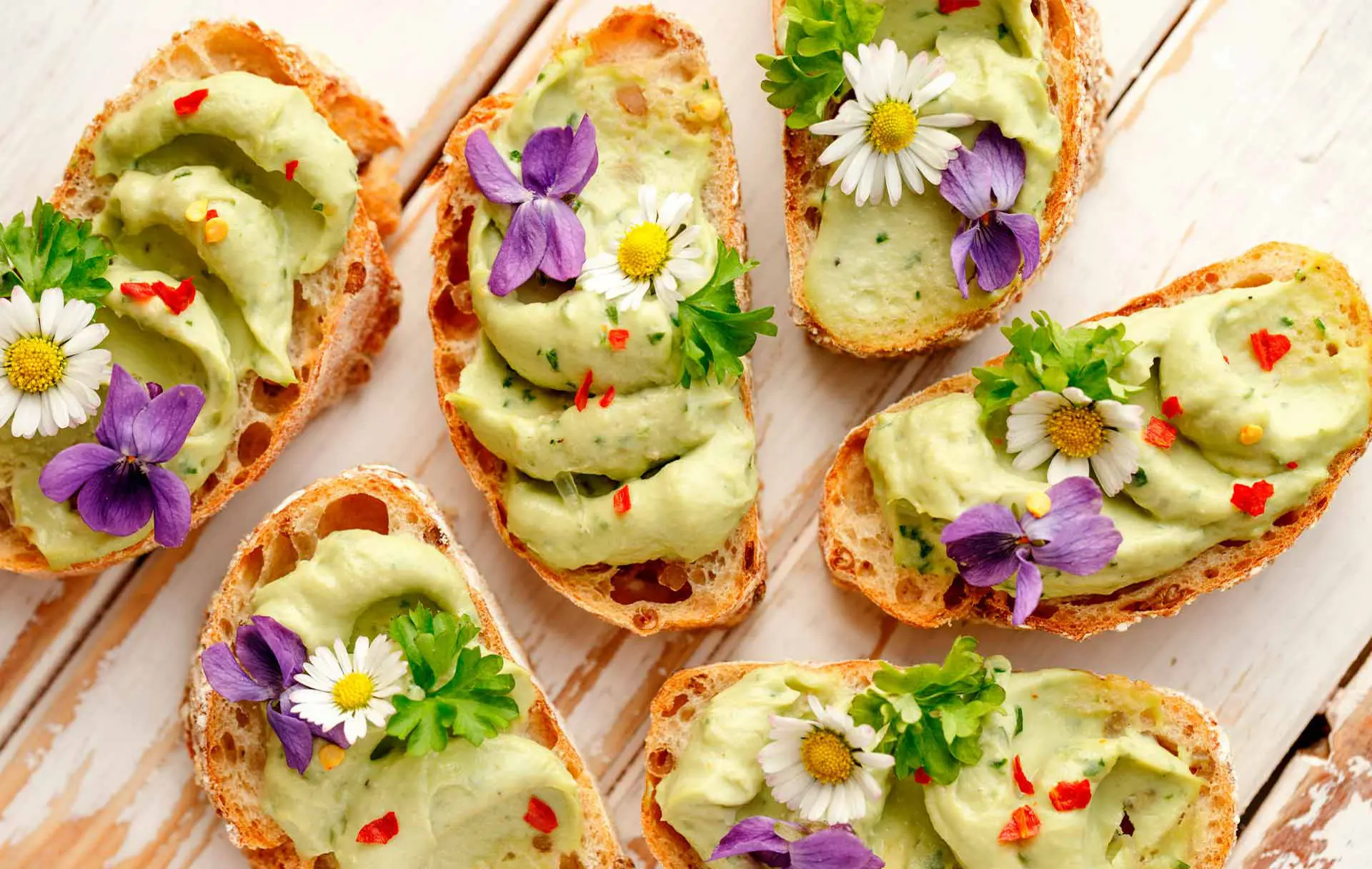Each year there are new trends in fashion and home decor, but did you know there are also food trends? Each year food moguls and writers influence the trends of the year. For 2018, Whole Foods, the large health food grocer, has predicted a number of interesting and exciting food trends. The first trend is Floral Flavors. And, to be honest, we couldn’t be more excited about this one, since we’ve posted about eating flowers a few times on our Instagram page. I guess we were ahead of the trend?!
There are hundreds of edible flowers around the world, so it isn’t exactly straightforward how you would use them in your cooking and meals. Each flower has a unique flavor, like fruits and vegetables, so keep that in mind — because you can’t substitute different flowers into recipes, since each tastes different from the rest.
In general, flowers have a sweet, floral profile or a strong, pungent radish-garlicky flavor. The former can be used in a wide variety of dishes including salads, desserts, and breakfast bowls, while the latter is best reserved for savory dishes and garnish. We wouldn’t recommend decorating a cupcake with a flower that tastes like radish! But, we would recommend putting some rose petals or elderflowers on a cake. Yum!
Here are 5 simple ways to add flowers to your food:
1) Desserts
Sweet flower flavors like lavender, rose, chamomile, orange blossom, violet, lilac, hibiscus and elderflower are great additions to desserts, especially used as a garnish. Cake and pastry artists have been using flowers more and more in the past years as a beautiful, healthy and edible garnish. Search around pinterest for some great ideas.
2) Salads
Salads can get a little boring or repetitive, despite the fact that there are hundreds of vegetables, fruits, nuts, seeds and proteins to work with. Adding visual appeal to your salads is a great way to motivate yourself to eat them more often. Flowers are a perfect last minute addition to salads, use them for a pop of flavor and color. Flowers like nasturtiums, sweet william, and dandelion are great additions to salads as they have a fresh, zesty garlic/radish flavor. There are lots of ideas and flower flavor guides to be found on Pinterest.
3) Breakfasts
Bowls of oatmeal and smoothies are the perfect breakfast meal to add a few flowers to as garnish. Keep in mind that flowers are a raw, whole plant food so they are very healthy, and add lots of nutrition to your meal! Flowers that pair well with dessert flavors, like rose, chamomile and violet are perfect to garnish a beautiful smoothie, oatmeal or bowl of chia with. Click here for great ideas.
4) Soups
Topping soups with some toasted seeds, a drizzle of balsamic reduction or freshly toasted croutons is great, but for some real flair and to dazzle your guests try garnishing soup with some delicate flowers. Tiny squash blossoms are perfect, as are calendula, chive and pansy. How about this photo for some inspiration?!
5) Flower Essences
Flowers are a beautiful so the tendency in cooking is to use them as garnish or uncooked because they add so much to the visual appeal of a dish. That being said, flower flavors can be added to your cuisine, in particular desserts, by using flower essences. Rose water and Orange Blossom water are delicious and included in many mediterranean recipes, for example baklava. Try adding 1 tablespoon of rose water to a vanilla cupcake recipe and we think you’ll love the result. Lavender vinegars are also great added in 1 teaspoon amounts to blueberry muffins or orange scones. One final suggestion, add some excitement to your water or cold tea by adding rose water to it, it’s delicious and makes drinking 8 cups a day that much easier!
One general tip for using flowers in cooking is to remember that a little goes a long way. Flower flavors tend to be strong (but not always), so using them in small amounts and as garnish are good ways to get acquainted with the flavors.
